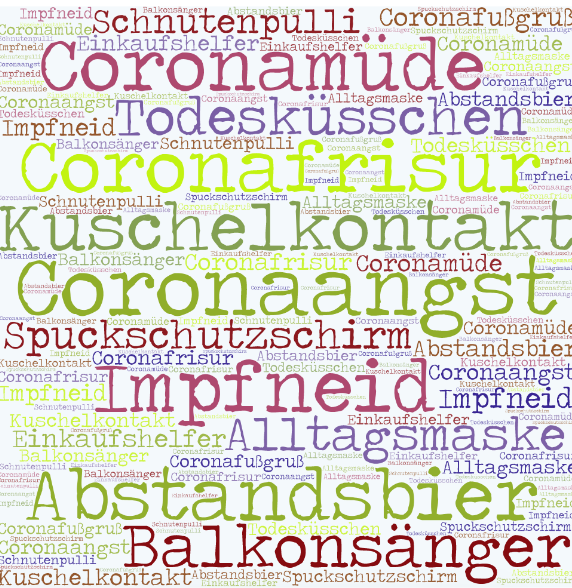
German is an interesting case of how grammar can facilitate the creation of new words and influence the evolution of a language
by Pisana Ferrari – cApStAn Ambassador to the Global Village
The coronavirus pandemic has led to an explosion of new words and phrases in many countries and cultures. We have written about this new lexicon, and how it is helping people to make sense of the changes in our lives, in a few articles for our blog (see links below). One country in particular, Germany, stands out among others in terms of number of new words created. The Leibnitz Institute for the German language has recorded 1,200+ new words in the COVID-19 year, versus around 200 in an average year. In German the rules of compound noun formation make creating a new word out of existing ones very easy, an interesting case of how grammar can influence the evolution of a language. German often combines words to make new ones to describe objects of every day use, e.g. Handschuhe (hand shoes), for gloves, as well as human emotions. Notable examples include Weltschmerz (world-weariness), Zeitgeist (spirit of the time), and Schadenfreude (joy in another’s misfortune). But the number of new words coined over the last year is something on a scale that had not been seen since World War II, says Anatol Stefanowitsch, a professor of Linguistics at the Free University of Berlin, quoted in an article for The New York Post.
In a very entertaining piece for Slate’s online magazine, US writer and translator Dr. Rebecca Schumann, who is passionate about German and is the author of a book called “Schadenfreude, A Love Story: Me, the Germans, and 20 Years of Attempted Transformations, Unfortunate Miscommunications, and Humiliating Situations That Only They Have Words For”, explains how this creative process works. To make a decent German compound noun, she says, you have to either memorize a very long if-then chart, be a native speaker, or have what’s called a Sprachgefühl—literally “language feel,” or an instinct for what sounds right. But, she adds, for a “semi-workable shortcut”, you start with two nouns, or an adjective and then a noun (with the adjective first, as per German rules about word order), and then maybe add a verb (or a verb turned back into a noun!), and then you put them all together. The tricky part is that you often have to put in connecting letters, and which letter you use depends on the smaller words’ last letters; this will make the big new word easier to pronounce.
The new words, according to Dr Christine Möhrs, who works at the Leibnitz Institute, play an important role in reassuring people. “When new things happen in the world [we] look for a name”(…) “Things that do not have a name can cause people to feel fear and insecurity. However, if we can talk about things and name them, then we can communicate with each other. Especially in times of crisis, this is important.” They also tell a story of solidarity and community. For example, Einkaufshelfer is someone who helps others with their shopping, and CoronaFußgruß (corona foot greeting) shows a human desire for connection, despite the enforced physical distance.
As the months move on, and, in at least some countries, we are entering a post COVID-19 era, new words will no doubt be created to reflect and describe the “New Normal”, even if maybe not on the scale we have seen up to now. And then, as is always the case, only time will tell which, if any, coronavirus-related neologisms, in Germany and elsewhere, will go mainstream and be included in dictionaries.
Here are a few examples of compound nouns drawn from the Leibnitz Institute’s list
- Coronaangst (anxiety over Covid-19)
- Coronamüde (COVID-19 exhaustion)
- Impfneid (vaccination envy)
- Coronafrisur (corona hairstyle)
- Kuschelkontakt (cuddle contact)
- Abstandsbier (distance beer)
- Balkonsänger (balcony singer)
- Todesküsschen (friendly smooch on the cheek viewed as a kiss of death)
- Alltagsmaske (everyday mask)
- Spuckschutzschirm (mask: spit protection umbrella)
- Schnutenpulli (mask: snout sweater)
Sources
“In Germany, more than 1,200 new words have been created in age of COVID-19”, Frank Miles, The New York Post, April 23, 2021
“Coronaangst ridden? Overzoomed? Covid inspires 1,200 new German words”, Abby Young-Powell, The Guardian, February 23, 2021
“Hamsterkauf! Coronazeit! There’s a German Word for Your Pandemic Experience”, Rebecca Schuman, Slate, Feb 24, 2021
Our blog articles on this topic
Link to Rebecca Schuman’s book
Read more about language, linguistic curiosities and linguistic research on our blog at this link